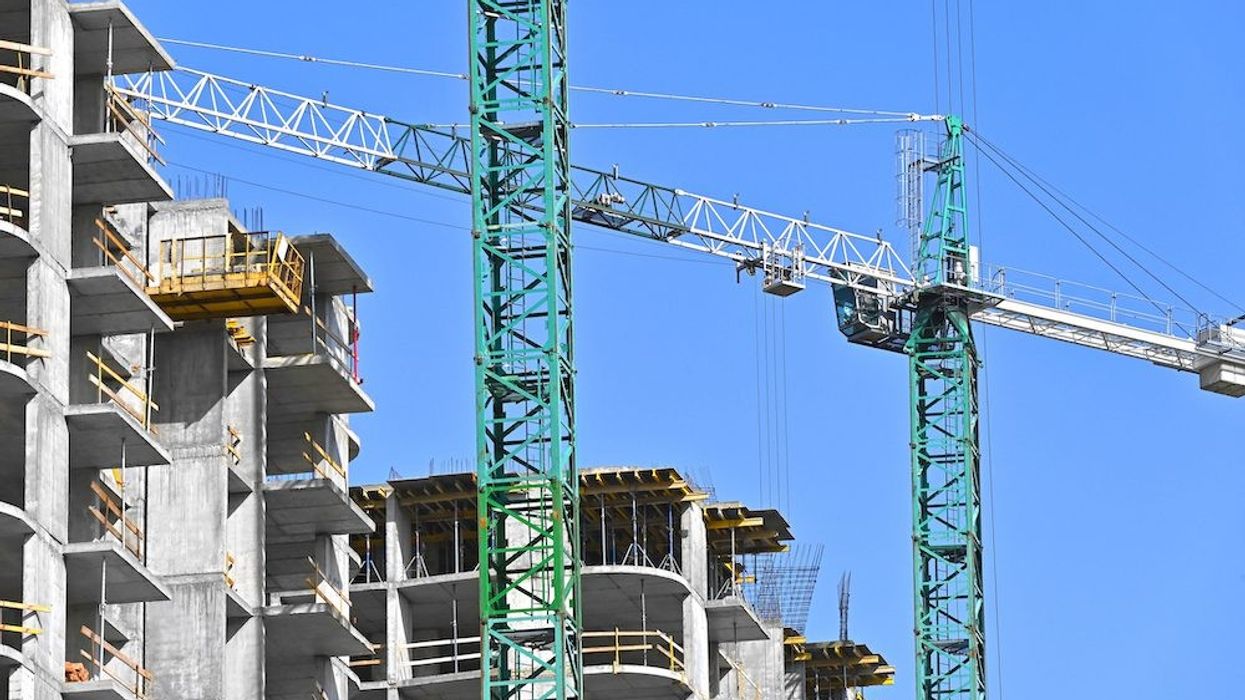In Ontario, concrete dominates the construction industry, but these days, there isn't enough of it to go around.
In an E-Blast from July, Concrete Ontario outlined some of the factors driving the current concrete shortfall.
"Ontario's ready mixed concrete industry has been experiencing unprecedented challenges regarding the supply of raw materials required to produce concrete in 2022. The demand for construction materials remains at an all-time high, both in Ontario and in the adjacent provinces and states that we border, and global supply chain issues, combined with equipment and labour shortages, are having a very detrimental impact on our industry's ability to meet all the concrete needs in the Ontario marketplace," it reads. "These issues are further compounded by three of the five cement plants in Ontario having significant equipment break-downs that have required emergency repairs... it is expected that raw material supply constraints may continue throughout the remainder of 2022."
Richard Lyall is the president of Residential Construction Council of Ontario (RESCON). He has seen many of these setbacks play out in real-time, and has a few more to add to the equation.
For residential builders, the pandemic thinned out labour, but demand for building services intensified amid low interest rates, creating a backlog that many builders have yet to catch up with. And then, in March, hundreds of aggregate haulers went on strike, protesting for rate increases. This disrupted the transportation of aggregate from quarries to concrete plants, where ready mix concrete is produced.
"It's like a giant game of dominoes," he says. An interconnected operation, with each individual component affecting the stability of the whole. "You delay one thing and it delays everything else."
For Ontario's humble share of cement plants, getting back on track following things like kiln and gas pipe repairs and site closures will take time.
"I've talked to the concrete people and they've had some real challenges. They want to serve the industry and serve our market. They're not intentionally out there trying to piss people off," says Lyall. "When you're going at full capacity and you shut down for a while, you can't make up for lost time. It's just that simple. Of course, these things do balance out. All markets work in cycles and we're just at a very difficult part of the cycle with a lot of risks baked in to the system and a lot of uncertainty."
Jeremiah Shamess is the Senior Vice President of the Private Capital Investment Group at Colliers International. His work involves selling land to property developers -- he's privy to the inner workings of the construction sector.
In Shamess' view, the current concrete shortage has been years in the making, with many of the problems at play systemic in nature.
"These forming companies, there aren't a lot of them and they're all dealing with labor shortages. Because of that, you're seeing a major shortage of concrete forming companies being able to put people on site," he says. "Once they get booked up, there's no one left to actually do the work. So then projects get delayed. And when they're bidding for the next project, they can bid a higher cost because they're consistently in demand."
Although concrete shortages aren't limited to Ontario -- BC and Alberta have faced similar challenges in the past months -- Ontario's dependence on concrete is unrivalled.
"Almost all of our construction typology is based on form and pour concrete," says Shamess. "We don't do a lot of steel construction work. If you go to New York or Chicago, you see a lot of their rail decks and elevated highways and subways are built with steel. Whereas you look at the Gardiner, it's entirely built out of concrete."
In part, this boils down to Ontario's makeup of skilled labour. Although Shamess says he is aware of developers who are trying to bring steel fabrication to the province, steelworkers are hard to come by. Meanwhile, concrete is pretty much ingrained.
In the 1960s, Greenwin -- an Ontario-based property management and development firm -- created a high-rise building method called “flying form," which streamlined the building process. With flying form, a preassembled mould is used to form concrete level by level. Once the concrete on one level is poured and settled, the same form is raised to form concrete on the consecutive levels.
Because of its efficiency, this method is still in use today, but it's far from the only driving force behind concrete construction in Ontario. Lyall says that our proclivity for concrete has a lot to do with our immigrant population.
In the 50s and 60s, Toronto saw an influx of Italian immigrants. This group largely ended up in residential construction.
"Italy is where concrete was actually originally invented. The first use of concrete was in the Colosseum in Rome," he says. "So, we have a lot of people that really know how to build with concrete. Once you have an industry that knows how to build concrete, is used to building concrete and so on, it's very hard to change that."
These days, concrete is in line with so many widespread market demands that it's hard to imagine using another material. Concrete is necessary when working with rebar and building stick-framed houses. Meanwhile, cement -- the base ingredient in concrete -- is used to make mortar, which is crucial to masonry work.
"It's very hard to break into the market with something new," says Lyall. "You don't have the economies of scale, which is important for costs. The more volume you have, arguably, the less expensive it should be to do that."
But with concrete supply expected to remain tight for the rest of the year, Lyall and Shamess both agree that now is a good time to address some of the underlying things that have left Ontario's construction sector in such a pinch in the first place.
"You know the old saying, 'you never let a good crisis go to waste?' Well, I think this now opens the door for us to really get serious and fix some of these problems that we have with our system," says Lyall. "We're also looking at alternative materials. With respect to mass timber buildings, that's an up-and-coming situation -- but again, our regulatory system was slow to respond to that and approve it. We've got too much red tape here."
That said, they have responded.
“As of July 1, several new pro-home ownership regulations and red-tape reduction measures took effect across Ontario, including amendments to Ontario’s Building Code that will allow for mass timber construction up to 12 storeys,” Tim Hudak, CEO of the Ontario Real Estate Association, said in a press release. “This change will bring Ontario in alignment with other provinces, such as BC and Quebec, and lead to more affordable units while creating jobs and supporting Ontario’s forestry sector.”
Of course, working with wood has its own set of challenges, but Ontario has skilled labour associated with mass timber construction and many timber projects in the pipeline. On top of that, using wood in bigger ways and more regularly will allow the opportunity to streamline and innovate timber building practices, much like what has been done very effectively with concrete.
While Ontario will probably always be, largely, a concrete jungle, there is plenty of room to expand construction methods -- so the sector has something to fall back on if concrete is scarce -- while introducing new procedures to help get projects up and running faster.
"Productivity is not measured well in our industry, but there are productive improvements that are happening," says Lyall. "For example, we're promoting digitizing the approvals process, where it's all paperless. And then, on the design [side], we're promoting Building Information Modeling, which is a whole other story and an interesting one. So we're driving innovation too."





















